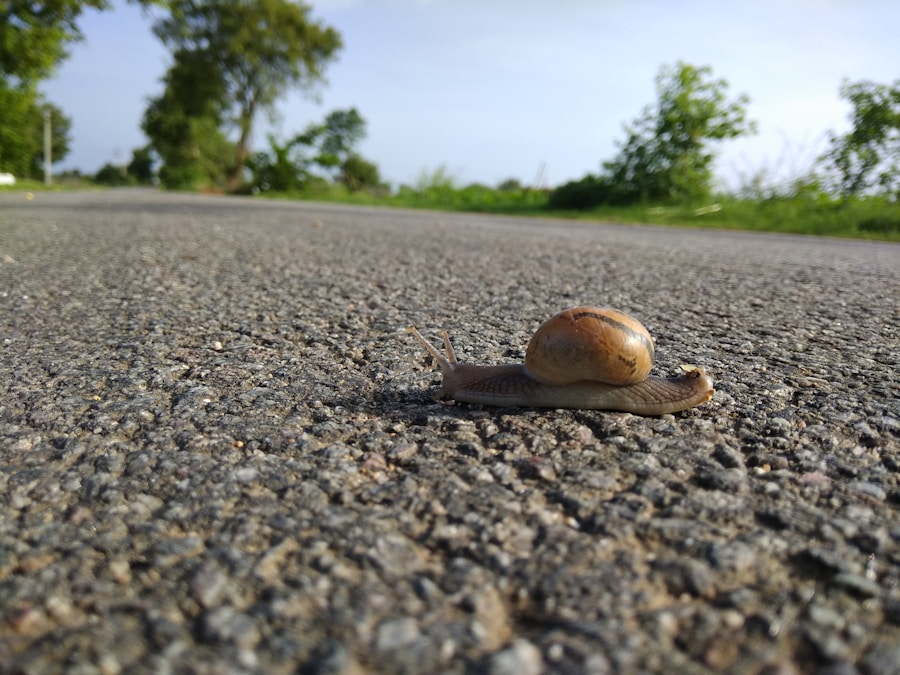Slow travel is a philosophy that encourages travelers to take their time, savoring experiences rather than rushing through them. This approach stands in stark contrast to the fast-paced, checklist-oriented style of tourism that often prioritizes quantity over quality. The essence of slow travel lies in the belief that the journey itself is just as important as the destination.
By immersing oneself in the local environment, engaging with residents, and allowing for spontaneity, travelers can cultivate a deeper understanding of the places they visit. The roots of slow travel can be traced back to the broader slow movement, which began in Italy in the late 1980s as a response to the fast food culture. This movement has since expanded to encompass various aspects of life, including food, fashion, and travel.
Slow travel advocates for a more sustainable approach, emphasizing the importance of reducing one’s carbon footprint by opting for local transportation methods, such as walking or cycling, and choosing accommodations that support local economies. By prioritizing meaningful interactions and experiences over mere sightseeing, slow travel fosters a sense of connection to the world and its diverse cultures.
Key Takeaways
- Slow travel emphasizes the journey over the destination, allowing for a deeper and more meaningful travel experience.
- Embracing the mindset of slow travel involves being open to spontaneity, embracing a slower pace, and immersing oneself in the local culture.
- When planning a slow travel itinerary, it’s important to prioritize quality over quantity, allowing for ample time to explore and connect with each destination.
- Immersing yourself in local culture means engaging with the community, participating in local traditions, and learning about the history and customs of the area.
- Disconnecting from technology and embracing the present moment allows for a more authentic and enriching travel experience, fostering mindfulness and gratitude.
Embracing the Mindset of Slow Travel
Embracing the Local Culture
For instance, rather than rushing from one tourist attraction to another, a slow traveler might spend an afternoon in a local park, observing the daily lives of residents and engaging in conversations with them.
Being Open to New Experiences
Moreover, embracing this mindset means being open to spontaneity and flexibility. Plans may change, and unexpected opportunities may arise that can lead to enriching experiences. For example, a traveler might stumble upon a local festival or market while wandering through a neighborhood, providing an authentic glimpse into the culture that is often missed by those adhering strictly to itineraries.
Personal Growth and Self-Discovery
This openness not only enhances the travel experience but also fosters personal growth and self-discovery.
Planning a Slow Travel Itinerary

Creating a slow travel itinerary involves careful consideration of destinations and activities that align with the principles of this approach. Instead of cramming numerous locations into a short timeframe, slow travelers often choose fewer destinations and allocate more time to each one. This allows for deeper exploration and engagement with the local culture.
For instance, instead of attempting to visit multiple cities in a week, one might choose to spend an entire week in a single city or region, allowing for leisurely exploration. When planning a slow travel itinerary, it is essential to prioritize activities that promote immersion rather than mere observation. This could include taking part in workshops or classes that teach traditional crafts or cooking techniques unique to the area.
Engaging with local guides who can share their knowledge and stories can also enhance the experience. Additionally, incorporating downtime into the itinerary is crucial; this could mean scheduling free afternoons for spontaneous exploration or simply relaxing at a café while people-watching.
Immersing Yourself in Local Culture
To truly embrace slow travel, one must actively seek opportunities to immerse themselves in local culture. This can take many forms, from participating in community events to volunteering with local organizations. Engaging with residents not only enriches the travel experience but also fosters connections that transcend cultural boundaries.
For example, attending a traditional dance performance or joining a local cooking class can provide insights into customs and traditions that are often overlooked by tourists. Moreover, slow travelers often prioritize staying in locally-owned accommodations, such as guesthouses or homestays, which offer a more authentic experience compared to large hotels. These settings often provide opportunities for interaction with hosts who can share their stories and recommendations for exploring the area.
By choosing to dine at family-run restaurants or markets rather than international chains, travelers can savor authentic cuisine while supporting local economies.
Disconnecting from Technology and Embracing the Present Moment
In an age dominated by technology and constant connectivity, slow travel encourages individuals to disconnect from their devices and fully engage with their surroundings. This disconnection allows travelers to be present in the moment, fostering deeper connections with both people and places. For instance, instead of documenting every experience on social media or checking emails frequently, one might choose to leave their phone behind during excursions, allowing for uninterrupted exploration.
Embracing the present moment can lead to heightened awareness and appreciation of one’s environment. The sounds of bustling markets, the aroma of street food, and the vibrant colors of local art become more pronounced when one is not distracted by screens. This intentional focus on the here and now can also enhance mindfulness practices, allowing travelers to cultivate gratitude for their experiences and surroundings.
Practicing Mindfulness and Gratitude

Mindfulness is an integral aspect of slow travel, encouraging individuals to be fully present in their experiences. Practicing mindfulness can take many forms, from meditation sessions in serene natural settings to simply taking a moment to breathe deeply and appreciate one’s surroundings. By cultivating mindfulness during travel, individuals can develop a greater sense of awareness and connection to their environment.
Taking time each day to reflect on moments of joy or beauty can deepen one’s appreciation for the journey. This could involve journaling about daily experiences or expressing gratitude towards locals who share their culture and stories.
By fostering an attitude of gratitude, travelers can transform ordinary moments into extraordinary memories.
Savoring the Culinary Delights of Each Destination
Food is often at the heart of cultural experiences, making it an essential component of slow travel. Savoring culinary delights allows travelers to connect with local traditions and flavors while supporting local farmers and artisans.
Participating in food tours or cooking classes can provide valuable insights into culinary practices unique to each destination. For example, learning how to make traditional pasta in Italy or exploring spice markets in Morocco can deepen one’s understanding of local culture through its culinary heritage. Additionally, taking time to enjoy meals—rather than rushing through them—can enhance the overall experience, allowing travelers to fully appreciate flavors and textures while engaging in conversations with fellow diners.
Reflecting on the Journey and Its Impact on Your Perspective
As one embarks on a slow travel journey, reflection becomes an essential practice that allows individuals to process their experiences and insights gained along the way. Taking time to contemplate what has been learned—about oneself, others, and different cultures—can lead to profound personal growth. This reflection may occur through journaling or sharing stories with fellow travelers or friends upon returning home.
The impact of slow travel on one’s perspective can be transformative. By immersing oneself in diverse cultures and engaging meaningfully with locals, travelers often develop a greater appreciation for global diversity and interconnectedness. This newfound understanding can inspire individuals to adopt more sustainable practices in their daily lives and foster empathy towards others’ experiences and challenges.
Ultimately, slow travel not only enriches individual journeys but also contributes to a broader understanding of humanity’s shared existence on this planet.
If you’re interested in exploring the concept of travel in a unique way, you may also enjoy reading How to Explain Travel to a Five-Year-Old. This article delves into the simplicity and wonder of travel through the eyes of a child, reminding us to embrace the joy and curiosity that comes with exploring new places. It complements the idea of slow travel by emphasizing the importance of being present and open to the experiences that come our way.
FAQs
What is slow travel?
Slow travel is a mindset and a way of traveling that emphasizes immersing oneself in the local culture, savoring the journey, and taking the time to truly experience a destination, rather than rushing from one tourist attraction to another.
What are the benefits of slow travel?
Slow travel allows travelers to connect with local communities, gain a deeper understanding of a destination’s culture and history, reduce their environmental impact, and experience a more relaxed and meaningful travel experience.
How does slow travel differ from traditional travel?
Traditional travel often involves visiting multiple destinations in a short period of time, focusing on checking off popular tourist attractions, and adhering to a strict itinerary. Slow travel, on the other hand, encourages a more leisurely pace, staying in one place for an extended period, and embracing a more authentic and immersive travel experience.
What are some tips for embracing slow travel?
Some tips for embracing slow travel include choosing a single destination to explore in depth, staying in locally-owned accommodations, engaging in cultural activities, savoring local cuisine, and prioritizing quality experiences over quantity of sights seen.
Is slow travel suitable for all types of travelers?
Slow travel can be enjoyed by a wide range of travelers, including families, solo travelers, couples, and seniors. It can be particularly appealing to those who seek a more meaningful and enriching travel experience.



0 Comment